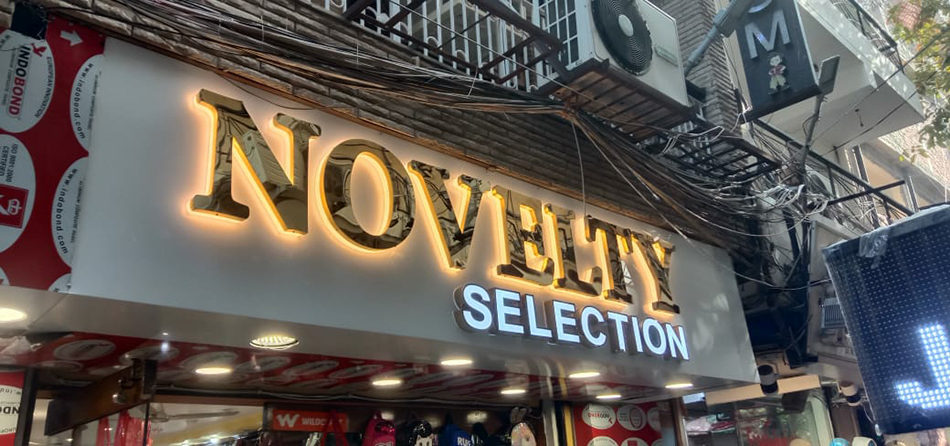A Road signal board is an essential part of traffic management and road safety. These boards serve as critical indicators that guide drivers and pedestrians, ensuring that traffic flows smoothly and safely. Whether it’s signaling a stop, providing directional instructions, or alerting drivers to upcoming hazards, the importance of a Road signal board cannot be overstated. In this blog, we will explore why these traffic signs are vital to the infrastructure of any urban or rural road system and how they contribute to reducing accidents and improving road safety.
Why Road Signal Boards are Important
- Ensuring Compliance with Traffic Laws
One of the main functions of a Road signal board is to communicate traffic laws and regulations to drivers. Signs such as stop signs, yield signs, speed limits, and no-entry signs help drivers understand the rules they need to follow. These signals are crucial in maintaining order on the roads and ensuring that drivers obey traffic laws to prevent accidents. By clearly marking traffic regulations, a Road signal board helps keep drivers informed and responsible for their actions.
- Improving Driver Awareness
A Road signal board helps improve driver awareness, making them aware of potential hazards or changes in traffic patterns. For example, warning signs like “Slippery Road Ahead” or “Sharp Turn” give drivers time to prepare and adjust their speed and behavior accordingly. By increasing awareness, these signs can prevent accidents, minimize collisions, and improve overall safety. A clear, well-placed road signal board ensures that drivers are not caught off guard by unexpected road conditions or obstacles.
- Enhancing Pedestrian Safety
Traffic signal boards aren’t just for drivers. They also play a vital role in ensuring pedestrian safety. Crosswalk signals, pedestrian stop signs, and signals for traffic lights dedicated to pedestrians all help pedestrians navigate busy roads safely. A Road signal board can ensure that both vehicles and pedestrians have clear instructions on when it is safe to cross, reducing the risk of pedestrian accidents and making sure everyone follows the same set of rules.
- Guiding Traffic Flow
A Road signal board is essential in maintaining the proper flow of traffic. Signs that indicate the presence of an intersection, lane changes, or merging lanes help drivers adjust their route and stay on track. In areas with heavy traffic, signs like “Merge Left” or “No U-Turn” help guide drivers, ensuring that there are no traffic bottlenecks or unsafe lane changes. Proper signage is especially critical in high-density urban areas or near schools and busy intersections where traffic flow can be chaotic without clear guidance.
- Promoting Efficiency on Roads
Beyond safety, a Road signal board is a key element in promoting the efficiency of transportation systems. Traffic signs can help prevent bottlenecks, reduce wait times at intersections, and improve overall traffic flow. For example, signs that indicate the proper lane for turning or the use of dedicated lanes for buses and bicycles can increase the efficiency of road networks. A well-managed road system ensures faster travel times for both personal and commercial vehicles, which is beneficial for the economy and for everyday commuting.
- Durability and Longevity of Road Signal Boards
A Road signal board must be made from durable materials that can withstand the harsh weather conditions typical on roads. Whether it’s rain, snow, intense sun, or strong winds, traffic signs need to be sturdy and weather-resistant. Materials like aluminum and high-quality plastic are often used because they are lightweight, corrosion-resistant, and built to last for years. Moreover, reflective materials and illuminated signs ensure visibility even in low light or nighttime driving, further enhancing their effectiveness.
How to Choose the Right Road Signal Board
When selecting a Road signal board for your location, it’s crucial to consider the type of information that needs to be conveyed. Directional signs, warning signs, and regulatory signs each serve different functions, and understanding their purpose is key to choosing the right one. Placement is another essential factor. Road signal boards should be visible from a distance and placed in locations that ensure drivers have enough time to react. Regular maintenance is also necessary to keep the signs clean and legible, ensuring that they continue to serve their purpose effectively.
Conclusion
In conclusion, a Road signal board is an indispensable tool in managing traffic and ensuring the safety of both drivers and pedestrians. These boards provide clear guidance on traffic laws, warnings about potential hazards, and help manage the flow of traffic to prevent accidents. Proper placement and maintenance of these boards are crucial to ensuring that they are effective in their role.
If you’re in need of high-quality, durable, and reliable Road signal boards, explore our range of traffic solutions at Road signal board. With the right signage, you can ensure smoother traffic flow, enhanced safety, and better navigation on the roads.




 No products in the cart.
No products in the cart.